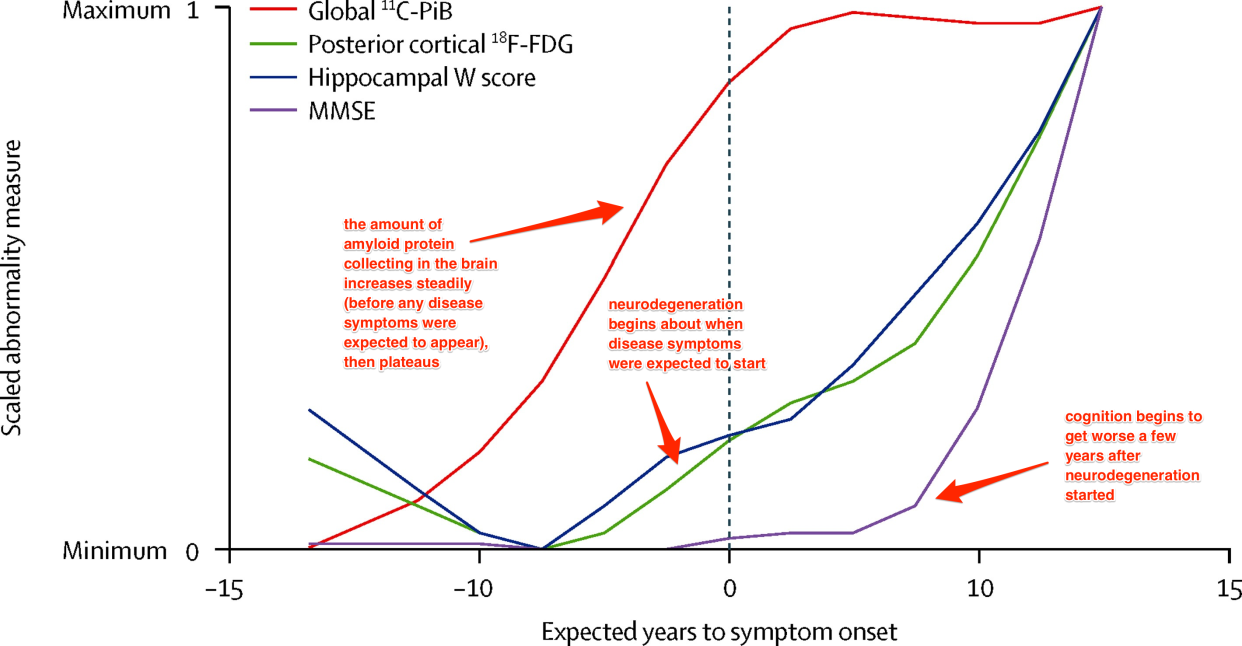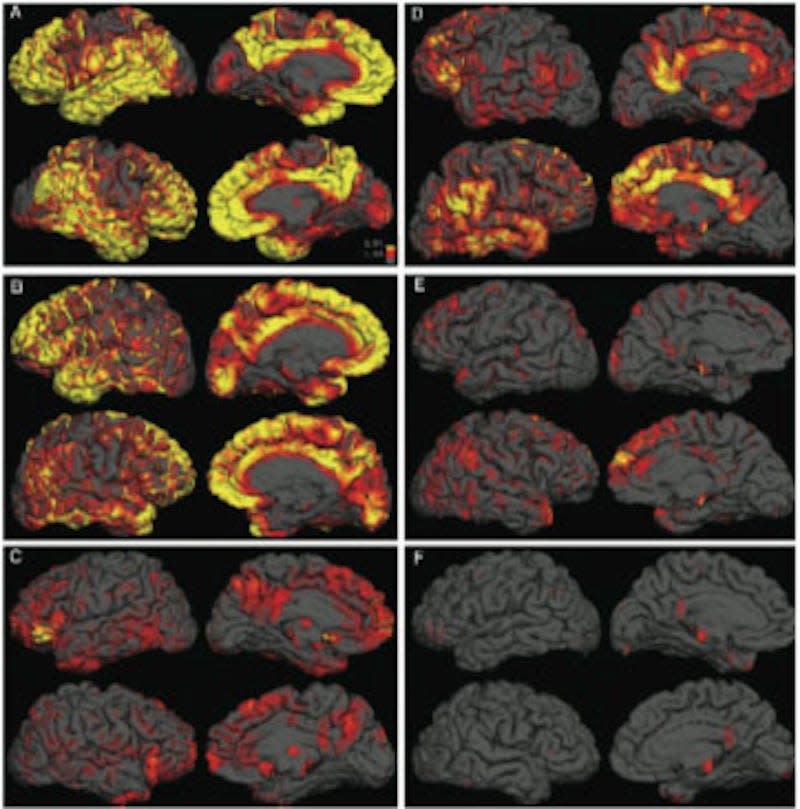Scientists just took a major step forward in understanding Alzheimer's

Alzheimer's
is a terrible disease that is slowly damaging the brains of an estimated 5.3 million Americans, most of them over age 65, according to the Alzheimer's Association.
Scientists know that a protein called amyloid builds up in the brains of people with Alzheimer's, and the clumps of amyloid are likely responsible for the brain damage that makes people with the disease lose their memory, become disoriented in time and space, and have other thinking, mood, and behavioral problems.
Until now, scientists had pieced together what they know about how Alzheimer's progresses by comparing people at different stages of the disease to each other.
But to really verify what scientists think is going on — particularly the relationship between amyloid and the development of Alzheimer's symptoms — scientists would need to closely follow the disease's progression from the very beginning in individuals. That's been very difficult, in part, because usually by the time someone is showing symptoms, the disease is already well underway.
A new paper from Wai-Ying Wendy Yau and colleagues at the University of Pittsburgh, published in The Lancet Neurology, is just the sort of study of individuals with Alzheimer's that scientists had been missing. The experiment is very small and the findings are preliminary, but the study's design allowed scientists to examine the progression of disease more closely than ever before.
Tracking changes in the brain
The new study followed seven individuals who had genetic mutations that are all but guaranteed to cause Alzheimer's; they're responsible for less than 5% of cases. Alzheimer's has a complex and partially unknown matrix of causes, but following this subset of patients let researchers track people they knew would eventually develop the disease, even before they were symptomatic.
Over a period of between six to eleven years, the scientists measured the amount of amyloid collecting in the brain of each patient, the extent of their brain damage, and their scores on a test of brain function. With this information, the scientists could track how Alzheimer's progressed in an individual patient for a longer period of time than they ever have before.
The graph below summarizes what they found.
The red line represents amyloid building up in the brain, which increases over time. The green and blue lines stand for two different factors that reflect the neurodegeneration, or progressive brain damage, Alzheimer's causes. As they go up, that indicates the brain is getting more and more damaged. The graph's purple line is for a measure of cognition, and the way it goes up shows when in the course of Alzheimer's disease a person's ability to think and remember gets worse:

Here's what all that means: Many years before any symptoms of Alzheimer's show up, amyloid has already begun to build up in the brain. Progressive brain damage and the various symptoms of the disease only show up after the amount of amyloid in the brain has stabilized.
In other words, the scientists saw Alzheimer's progressing in three stages:
Amyloid builds up gradually.
Amyloid stops building up, but what's already in the brain doesn't go away.
Gradual brain damage starts and causes the symptoms of Alzheimer's like memory loss and confusion.
Previously, scientists had basically thought stages 1 and 3 overlapped, with no stage 2 separating them.
Caveats and next steps

(Photo credit Lawrence Berkeley National Laboratory)
The scientists note that these findings need to be verified in a study of more patients (they only looked at seven in this experiment). Furthermore, it's not a given that Alzheimer's disease progresses the same way in people with the mutations as it does in the general public.
But this study is a step towards being able to detect Alzheimer's early and monitor how it progresses more reliably than we can now, Giovanni Frisoni and Pieter Jelle Visser write in a commentary on the paper in The Lancet Neurology.
This would be really helpful in the search for a treatment for the disease, because when scientists can monitor disease progression during a clinical trial, they know sooner whether the treatment being tested is actually working. To be able to do that, they need a clear picture of how the disease progresses when it's not treated.
An effective treatment for Alzheimer's is still likely a long way off, but this crucial step in understanding the disease is, as Frisoni and Visser say, "much needed."
See some notable people who were diagnosed with Alzheimer's:
NOW WATCH: This incredible animation breaks down how Alzheimer's affects the brain over time
See Also:
Scientists have found how memories physically affect your brain
A neurosurgeon calls this basic fact about the brain 'too strange to understand'
This stunning discovery about the brain will have scientists rewriting textbooks
